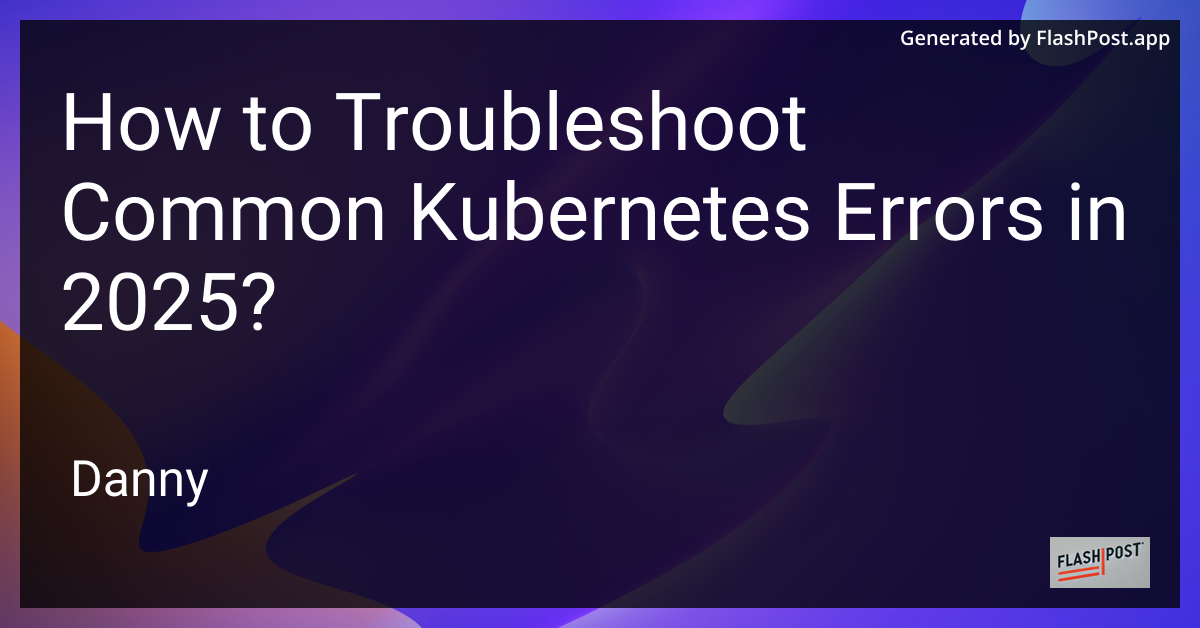
Kubernetes has revolutionized the way we manage containerized applications, offering unparalleled scalability and flexibility. However, as with any complex system, issues are inevitable. This guide will help you troubleshoot common Kubernetes errors in 2025, ensuring smooth operations in your cluster.
Table of Contents
- Understanding Kubernetes
- Common Errors and Solutions
- Pod Scheduling Failures
- Insufficient Resources
- Network Connectivity Issues
- Persistent Volume Claims (PVC) Problems
- Advanced Troubleshooting Techniques
- Conclusion
Understanding Kubernetes
Kubernetes, an open-source platform, automates the deployment, scaling, and operation of application containers. It's essential to understand its architecture and the components involved in a successful kubernetes cluster deployment.
Common Errors and Solutions
Pod Scheduling Failures
One of the most common issues in Kubernetes is pod scheduling failures. This occurs when the scheduler is unable to find a suitable node for the pod. The reasons could be:
- Insufficient resources: Check the available CPU and memory on nodes.
- Node affinity/anti-affinity rules: Make sure your rules are not too restrictive.
To resolve this, perform the following checks:
kubectl describe pod <pod-name>
This command provides insights into why a pod is not scheduling, helping diagnose the issue.
Insufficient Resources
If your Kubernetes console indicates "Insufficient resources", it means the cluster lacks necessary CPU or memory. You can address this by:
- Scaling your cluster: Add more nodes to the existing cluster.
- Resource requests/limits: Adjust the requests or limits in your pod definitions to better match available resources.
Network Connectivity Issues
Networking problems can severely impact the performance and reliability of your kubernetes. Use the following diagnostics:
- Check the network policies that might be blocking traffic.
- Use
kubectl execto run connectivity checks from within your pods.
kubectl exec -it <pod-name> -- /bin/sh ping <other-service>
Persistent Volume Claims (PVC) Problems
Problems with PVC often relate to the configuration or availability of storage. Verify the following:
- Ensure the storage class is correctly set.
- Check the availability and status of persistent volumes.
Use this command to investigate PVC issues:
kubectl describe pvc <pvc-name>
Advanced Troubleshooting Techniques
Advanced tools such as kubectl logs, kubectl debug, and third-party solutions like Prometheus and Grafana can offer deeper insights into cluster operations. Learning to effectively manage kubernetes helm chart configuration can also improve troubleshooting efficiency.
Conclusion
Troubleshooting Kubernetes can seem daunting due to its complexity. However, with the right tools and knowledge, common errors can be quickly resolved. Always ensure your cluster is up-to-date with the latest patches and regularly reviewed for configuration best practices. By mastering these troubleshooting techniques, you'll harness the full potential of Kubernetes in 2025.
For more detailed guides and advanced tutorials, visit our recommended resources on kubernetes cluster deployment and kubernetes helm chart configuration.